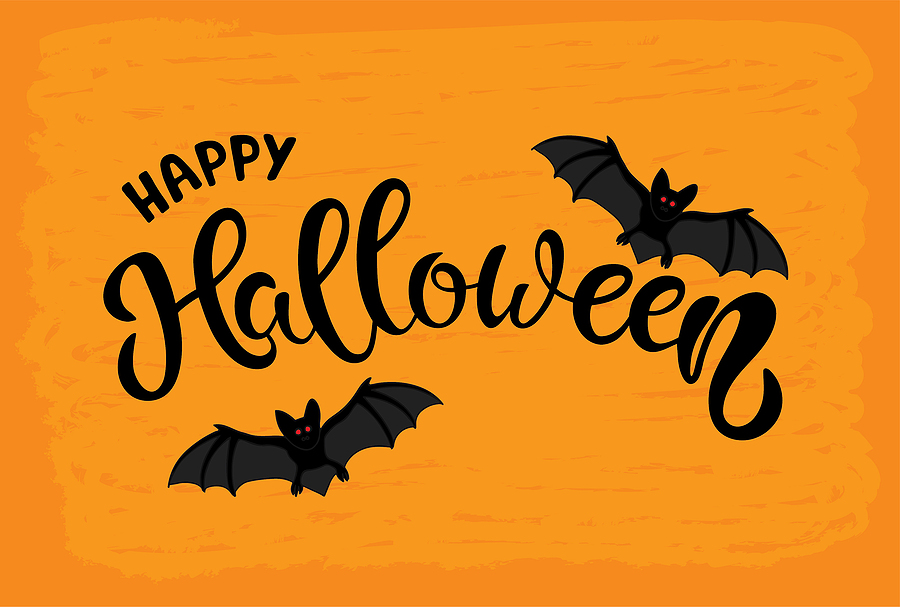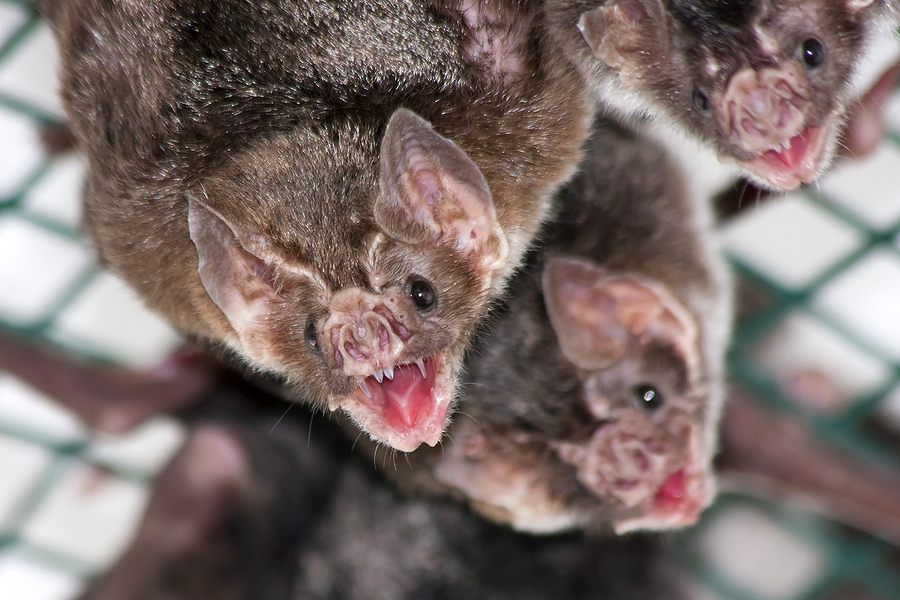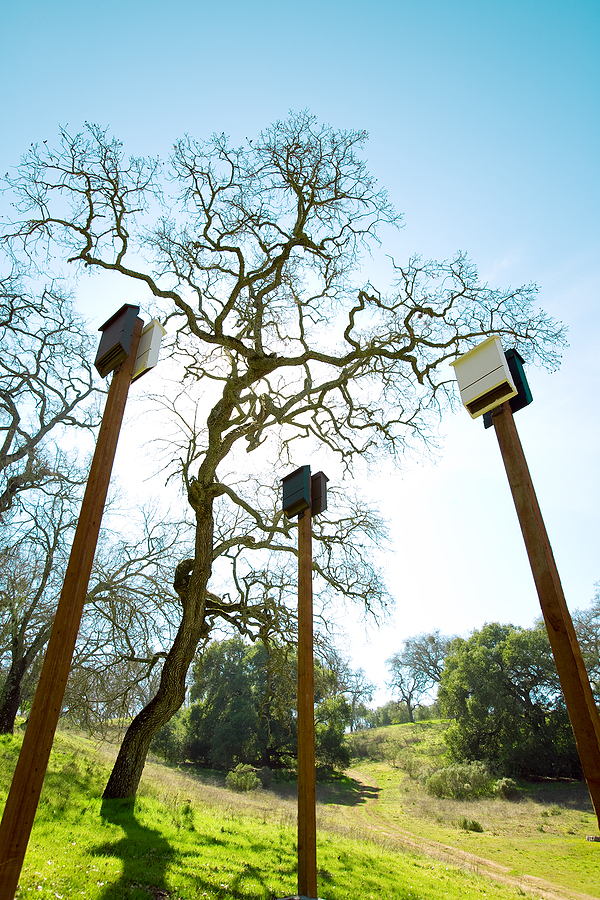
As October nights grow longer and jack-o’-lanterns flicker on front porches across Louisville, bats take flight against the moonlit sky—a quintessential Halloween scene. While these nocturnal creatures have long been associated with vampires and horror stories, the real vampire bats of the Americas tell a far more fascinating tale than any Hollywood movie could conjure.
Despite their fearsome name and spooky reputation, vampire bats are remarkable creatures whose biology and behavior challenge everything you might think you know about these Halloween icons. Far from the bloodthirsty monsters of legend, these small mammals have evolved extraordinary adaptations that make them invaluable to medical research and essential members of their ecosystems.
Whether you’re curious about the science behind these misunderstood, sanguineous creatures or dealing with bats in your Louisville home, understanding the truth about vampire bats can help separate fact from fiction this Halloween season.
What Are Vampire Bats? Separating Myth from Reality
Only three species of vampire bats exist worldwide, all native to Central and South America. These small mammals—typically measuring just three inches long with a seven-inch wingspan—are far removed from the massive, menacing creatures depicted in classic horror films. The common vampire bat (Desmodus rotundus) is the most well-known species and the primary focus of scientific research.
Although sanguineous, Vampire bats don’t actually “suck” blood as popular culture suggests. Instead, they use their razor-sharp teeth to make small incisions in their prey and then lap up the blood with their tongues—a feeding process that’s surprisingly gentle and efficient. Their victims often don’t even wake up during feeding, thanks to the bat’s stealthy approach and the numbing properties in their saliva.

These remarkable creatures possess heat sensors on their noses, allowing them to locate blood vessels beneath their prey’s skin with pinpoint accuracy. This adaptation, combined with their ability to walk, run, and even jump on the ground, makes them uniquely suited to their blood-based diet among all bat species.
Where Vampire Bats Live and What They Actually Eat
Vampire bats inhabit tropical and subtropical regions from Mexico to northern Argentina, thriving in caves, hollow trees, and abandoned buildings. While Louisville residents won’t encounter true vampire bats locally, understanding their natural habitat helps dispel fears about these creatures appearing in Kentucky attics.
Contrary to vampire folklore, these bats rarely target humans. Their preferred meals come from livestock such as cattle, horses, pigs, and chickens. When vampire bats do bite humans, it’s typically because other food sources are scarce, not because they have a particular preference for human blood.
The feeding process reveals the vampire bat’s remarkable adaptations. After landing near sleeping prey, they use their heat sensors to find the perfect spot where blood vessels run close to the skin surface. Their saliva contains a powerful anticoagulant called Draculin—named after the famous vampire count—which prevents blood from clotting during feeding. This same compound is now being studied by researchers for potential stroke treatments in humans.
The Fang-tastic Social Life of Vampire Bats
Social Dynamics within Colonies
Vampire bat colonies demonstrate some of the most sophisticated social behaviors found in the animal kingdom. These communities can range from small groups of a few dozen bats to large colonies housing several hundred individuals. Within these colonies, vampire bats engage in complex social interactions that would make any Halloween party seem simple by comparison.
The Practice of Reciprocal Altruism
Perhaps most remarkably, vampire bats practice reciprocal altruism—sharing blood meals with colony members who return from unsuccessful hunting trips. This blood-sharing behavior ensures that no individual goes without food for too long, as vampire bats must feed every two to three days to survive. They can even recognize individual colony members and remember who has helped them in the past.
Grooming and Social Bonding
Grooming plays a crucial role in vampire bat society, serving both hygienic and social functions. Bats spend considerable time grooming themselves and each other, strengthening social bonds within the colony. Mothers care for their young for several months, and the colony often adopts orphaned bats, demonstrating a level of social cooperation that challenges stereotypes about these supposedly sinister creatures.
Schedule a Free, On-Site Bat Control Inspection Today! ✨
Vampire Bats and Human Health: The Good and the Concerning
The relationship between vampire bats and humans presents both challenges and opportunities. While vampire bats can carry diseases such as rabies, the actual risk to humans remains relatively low. Most vampire bat bites occur in rural areas where livestock and bats coexist, and proper medical attention can address any health concerns.
However, vampire bats have become heroes in medical research. The anticoagulant properties in their saliva have led to breakthrough treatments for stroke patients. Scientists have developed medications based on vampire bat saliva that can help dissolve blood clots more effectively than traditional treatments. This Halloween, vampire bats might literally be saving lives in hospitals rather than threatening them in haunted houses.
Research into vampire bat physiology continues to yield insights into metabolism, blood processing, and social behavior that benefit human medicine and our understanding of mammalian biology.
Bat Control: When Bats Become Unwanted Guests
While vampire bats don’t inhabit Kentucky, Louisville homeowners may encounter other bat species that can become problematic when they take up residence in attics, barns, or other structures. Understanding effective bat control methods ensures both human safety and bat conservation.
Bat Removal and Control Service
Professional bat removal services focus on humane exclusion methods rather than extermination. One-way exclusion doors allow bats to leave roosting areas but prevent their return, while sealing entry points blocks future access. These methods protect both homeowners and beneficial bat populations that control insect pests throughout the region.
Environmental Modification
Habitat modification can make your property less attractive to bats seeking roosting sites. This includes reducing outdoor lighting that attracts insects (and consequently, the bats that feed on them), trimming tree branches away from roof lines, and maintaining proper ventilation to avoid the warm, humid conditions bats prefer.
The Cons of DIY
If you discover bats in your Louisville home, contact professional bat removal services rather than attempting DIY solutions. Experts understand local regulations protecting bat species and employ methods that prioritize both human safety and bat conservation.
Embracing the True Spirit of Halloween Bats
Understanding vampire bats reveals creatures far more complex and beneficial than their spooky reputation suggests. These small mammals have evolved remarkable adaptations for survival while contributing to medical advances that save human lives. Like many Halloween monsters, vampire bats are more misunderstood than truly menacing.
Their sophisticated social behaviors, unique feeding adaptations, and contributions to medical research make vampire bats worthy of respect rather than fear. Supporting bat conservation efforts helps protect these fascinating creatures and the ecosystems they serve.
This Halloween, as you see decorative bats adorning haunted houses and jack-o’-lanterns, remember that real bats—including the infamous vampire bat—play crucial roles in maintaining healthy ecosystems and advancing human medicine.
Here’s a batty Halloween fact to end our journey: The association between bats and vampires didn’t exist in folklore until after European explorers encountered vampire bats in the Americas. The legend grew from there, eventually inspiring Bram Stoker’s Dracula and cementing bats’ place in Halloween tradition. So the next time you see a bat silhouette against the full moon, you’ll know the real story is far more fascinating than any vampire tale.
If you’re dealing with unwanted bats in your Louisville home, don’t let them turn your residence into a haunted house. Contact our professional bat control services for safe, humane removal that protects both your family and these remarkable creatures.
Related Post: Fun Bat Facts for Halloween









